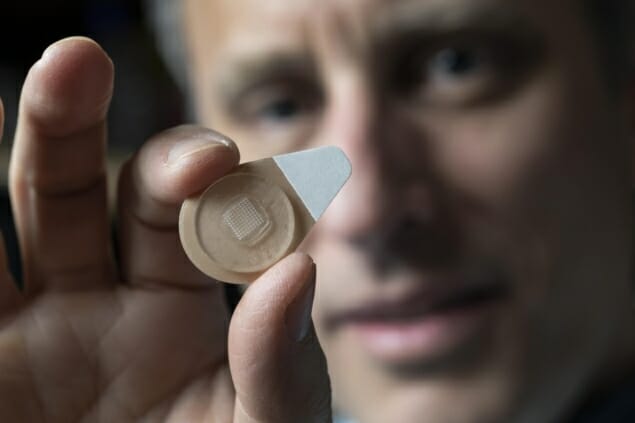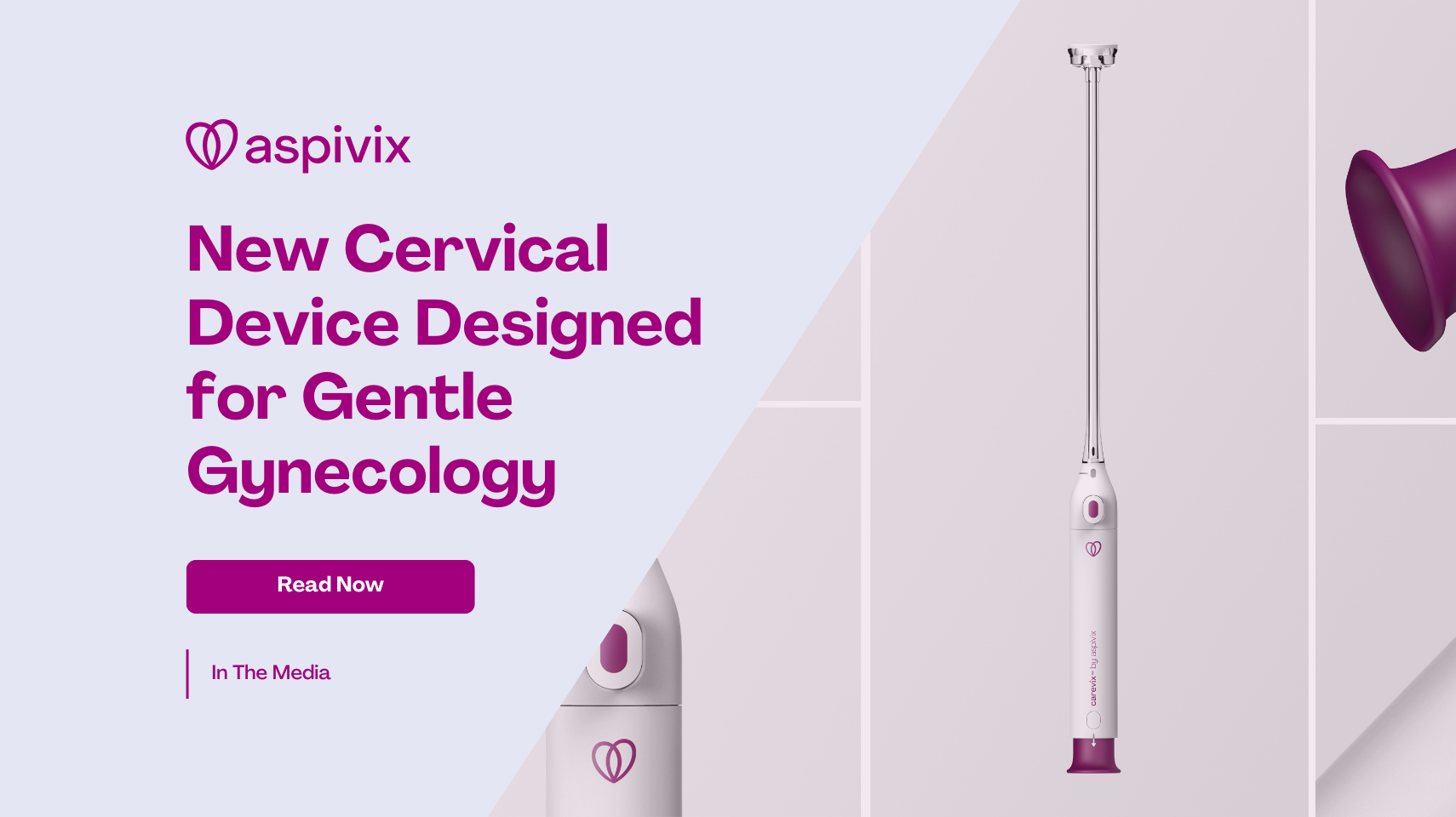
Innovations in Female and Male Contraception
Contraception has come a long way – from unusual birth control methods like crocodile dung, natural ointments, and lemon rinds that our ancestors have used, we now have birth control pills, injectables, contraceptive patches, IUDs, condoms, and sterilization methods. In this article, we talk about some innovations in contraception.
Given these modern contraceptives, the reproductive health field does not stop innovating and making birth control safer and more accessible for both men and women.
In celebration of World Contraception Day on 26th of September, we are going to take a look at some innovations in male and female contraception and developments in improving access to contraception worldwide.
Innovations in Female Contraception
1. Vaginal Capsule (OUI)
OUI is a vaginal capsule that dissolves and releases its formulation quickly after insertion. It provides effective birth control within a minute after insertion without using hormones.
OUI works by making it impossible for the sperm to pass through the cervical mucus. The barrier is created by a molecule that interacts with the cervical mucus and makes it impenetrable. This traps the sperm cells as they get deactivated because of the low pH environment.
This hormone-free approach to birth control is a topical treatment that only interacts with the mucus layer on the of the mucosa. Unlike medications, OUI minimizes side effects.(1)
Oui is not yet available on the market.
2. Microneedle contraceptive skin patch
The Microneedle contraceptive skin patch is a slow-release contraceptive hormone that is simple to administer. It is a long-acting form of contraception that does not need to be administered by a health professional.
After pressing the patch to the skin for one minute, the microneedles will rapidly detach from the patch within the skin and slowly release levonorgestrel for about 1 month.(2)
While the researchers have not yet tested the patch’s contraceptive efficacy in humans, evaluation on 10 women showed that it was easily and painlessly applied.

Mark Prausnitz holds an experimental microneedle contraceptive skin patch. Source: physicsworld.com
In 20219, Mark Prausnitz, one of the researchers said: “We hope to carry out our first human study using these patches within the next two to three years.” (3)
3. Antibodies as a non-hormonal contraceptive
Scientists at the University of North Carolina at Chapel Hill are engineering potent monoclonal antibodies that bind sperm to offer an inexpensive and non-hormonal form of female contraception. This offers women another non-hormonal option to prevent pregnancies.

A scanning electron micrograph of human sperm stuck together and immobilized by an antisperm antibody. Source: uncnews.unc.ed
The idea was inspired by the infertility that naturally happens when the woman develops antibodies against the sperm of her partner. Human clinical trials could start by 2023.(4)
4. Phexxi vaginal gel
Phexxi is a new gel that works by keeping the vaginal pH within 3.5 to 4.0, which makes It toxic to the sperm. Phexxi does not contain hormones, so there are no side effects that are typically associated with hormonal forms of contraception.
Another benefit is it can be used right before having sex, with the protection lasting for up to an hour.
This contraceptive comes with a 4-inch applicator that pushes the gel into the vagina. Phexxi is FDA-approved and is available by prescription by a healthcare provider. (5)
More developments in female contraception from 2020
Other developments in contraception to watch out for include a once-a-month birth control pill for women, a slimmer IUD, long-lasting vaginal ring, and expanded use of internal or female condoms. (6)
Fertility apps are also on the rise. One notable app is Clue. The app gives science-based period, PMS, and fertile window predictions.
Another app is the Emme Pill and Health Tracker. It is designed to help women stay on track with their birth control pills and sends notifications when it’s time to take them.
Natural Cycles is the first birth control app approved by the FDA. The app helps women determine their fertility status using their basal body temperature. This method is 93% effective when used correctly.
Innovations in Male Contraception
1. Hormonal male contraception
There is ongoing research for finding reversible methods of male contraception, such as hormonal male contraception pills. In this area, the second potential male birth control pill passed human safety tests. (7)
The experimental male contraceptive called 11-beta-methyl-19-nortestosterone dodecylcarbonate, or 11-beta-MNTDC is a modified testosterone that combines androgens and progesterone to decrease sperm production without affecting libido.
Tolulope Bakare, MD of UT Southwestern Medical Center says that this form of contraception offers flexibility while also reinforcing that men and women are both responsible for birth control. More studies need to be conducted to test its effectiveness and safety.
2. Transdermal gel for male contraception
Another reversible type of male contraception in the form of topical gels is being developed. Nestorone or Testosterone Transdermal Gel for male contraception is designed to reduce sperm count while keeping the level of testosterone within the normal range.
The gel is applied onto the man’s shoulders and upper arms once a day and is absorbed through the skin. It contains progestin, which prevents the creation of sperm. (8)

If approved by regulatory authorities, the Nestorone®/Testosterone gel would be the first-of-its-kind contraceptive for men. Source: popcouncil.org
Nestorone Testosterone Transdermal Gel has already been approved and is being sold in the US. Early research shows promising results, with the gel being well-tolerated and without serious side effects.
3. Injectable male birth control
Indian researchers have announced that clinical trials for the first injectable male birth control called RISUG has been completed. Risug stands for reversible inhibition of sperm under guidance. The product works by injecting a polymer into the tubes that carry the sperm from the testicles to block them from leaving the tubes.
A similar drug called Vasagel is also being developed in the US.(9) Clinical trials for RISUG are already in Phase III.
4. Ultrasound-powered male contraceptive
A male contraceptive device called Coso has been showing another promising reversible contraceptive solution for males. The device, which won German design graduate Rebecca Weiss a James Dyson Award, uses ultrasound waves to temporarily stop the regeneration of sperm.
The contraceptive effectiveness starts two weeks after it was first applied. (10)
Weiss thought of designing Coso after she was diagnosed with a cervical cancer precursor that prevented her from taking the pill. She and her partner could not find male contraception options other than the condom or vasectomy, which urged her to explore this as part of her master’s thesis in industrial design at the Technical University in Munich. She is currently looking for research institutions and industry partners who can fund clinical trials.
Innovations in Access to Contraception
Access to contraception has also been improving. For the first time in the UK, the contraceptive pill will soon become available to buy over the counter at UK pharmacies. Oral contraceptives are available for free in the UK with prescription, but the pandemic made it more difficult to get the contraception they need. This gives women in the UK more control over their reproductive health.(11)
To reduce barriers to contraception, the concept of telecontraception has emerged. Through a website or a smartphone app, patients can receive a prescription for contraception at a local pharmacy or by mail.(12)
During the pandemic, some clinics in the US and Canada have been extending prescriptions automatically if someone is established as a patient.(13)
In France, women will be offered free contraception by 2022. Women under 25 will not be charged for medical appointments, tests, prescription of contraception, and other procedures that have something to do with birth control. This is in response to the declining use of contraception among young women due to high costs. (14)
You can expect to see better, safer, and more accessible birth control methods in the years to come. Years from now, men will have more birth control options other than vasectomy and the condom, which encourages both sexes to share the responsibility for birth control and family planning. If you know about other innovations in contraception, drop us a message.
Sources:
1. OUI
2. Long-acting reversible contraception by effervescent microneedle patch
3. Microneedle patch delivers long-acting reversible contraception
4. Carolina scientists developing contraceptive that stops sperm in its tracks
5. Phexxi
6. Reviewing New Contraceptive Methods and Innovations
7. ‘The pill’ for guys: Male birth control option passes safety tests
8. Nestorone®/Testosterone Transdermal Gel for Male Contraception
9. World’s First Injectable Male Birth Control May Soon Arrive in India
10. Rebecca Weiss designs ultrasound-powered male contraceptive device
11. Contraceptive mini pill to be made available over the counter in the UK
12. A Study of Telecontraception
13. Improve Access to Family Planning Services as Pandemic Wears On
Share this story:










